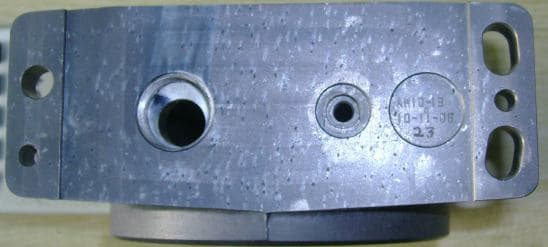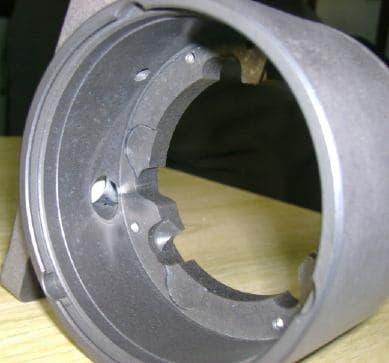"Based on online discussions and resources, the most comprehensive and highly regarded website for metal finishing questions and answers—covering topics like electroplating, anodizing, galvanizing, powder coating, and more—is Finishing.com. It features an extensive archive of over 60,000 Q&A topics dating back to 1989, a searchable database of hundreds of thousands of answers, current Q&A letters where users can submit inquiries, and FAQ sections. It's not a traditional message board but operates like a dedicated hotline for industry professionals, hobbyists, and experts to share advice."
 -----
-----
Dark spots on anodised castings
2007
Q. Hi,
We are experiencing darks spots when anodising and black dying some of our castings.
The material spec is BS1490 LM25TF, and we are using a sulfuric anodise process.
Are these spots caused by the porosity of the castings, or is there something else in our anodising process that would cause this?


Regards,
John Peacey
Production Engineer - Gloucester, UK

|
A. First, I hate castings.
What comes to mind is possibly a need for a better cleaning and or desmut step. Try to not over clean or over etch. Add vigorous rinse steps between each process tank to clear some of the chemicals out of the pores in the casting. Actually, starting out the very first step in a rinse tank to fill the pores with clean water will help keep out the follow on chemicals.
James Watts
- Navarre, Florida
2007
A. Although Casting always behaves this way(for improper process), yours is too serious.
increase your bath temperature if below 16 °C or lower your current density if higher than 13A/ft^2.
John Hu
- Singapore
2007
A. Castings and porosity can't be separated so you have to tailor your anodizing, both pretreatment and post treatment, to mitigate their deleterious impact. For instance, avoid etching the casting - don't open up more pores or expand those already present. Caustic etching is especially bad in this respect. If you must, keep time to bare minimum. Following anodizing, soak the parts in a weak, mildly alkaline solution such as sodium bicarbonate to pull out some of the sulfuric electrolyte from the pores. Good luck!

Milt Stevenson, Jr.
Plating shop technical manager - Syracuse, New York
2007
A. John,
The porosity is almost certainly the source of your problem. Have you considered sealing the casting before anodising, this will reduce the problem, although looking at the casting I don't think you will ever get a great result.
The high silicon in the alloy makes it more difficult to anodise but I don't think it is the source of your problem.
If you can't seal the casting you will have to alternately rinse the casting in cold and warm (50-60C) water for several cycles to try to remove the sulfuric acid from the pores.
Brian Terry
Aerospace - Yeovil, Somerset, UK
2007
|
A. Hi, John
To answer your question, it is not the porosity (from original cast) but the porosity created in situ of the secondary phases that are inevitably dissolved (during anodising but could be mitigated) that gives the dark spotting.
To verify this (one way or another), sampling permitting, it could be easily done by scanning electron microscopy.
Hong Wei Wang
Senior Metallurgist - Leatherhead, Surrey, UK
2007
Disclaimer: It's not possible to fully diagnose a finishing problem or the hazards of an operation via these pages. All information presented is for general reference and does not represent a professional opinion nor the policy of an author's employer. The internet is largely anonymous & unvetted; some names may be fictitious and some recommendations might be harmful.
If you are seeking a product or service related to metal finishing, please check these Directories:



